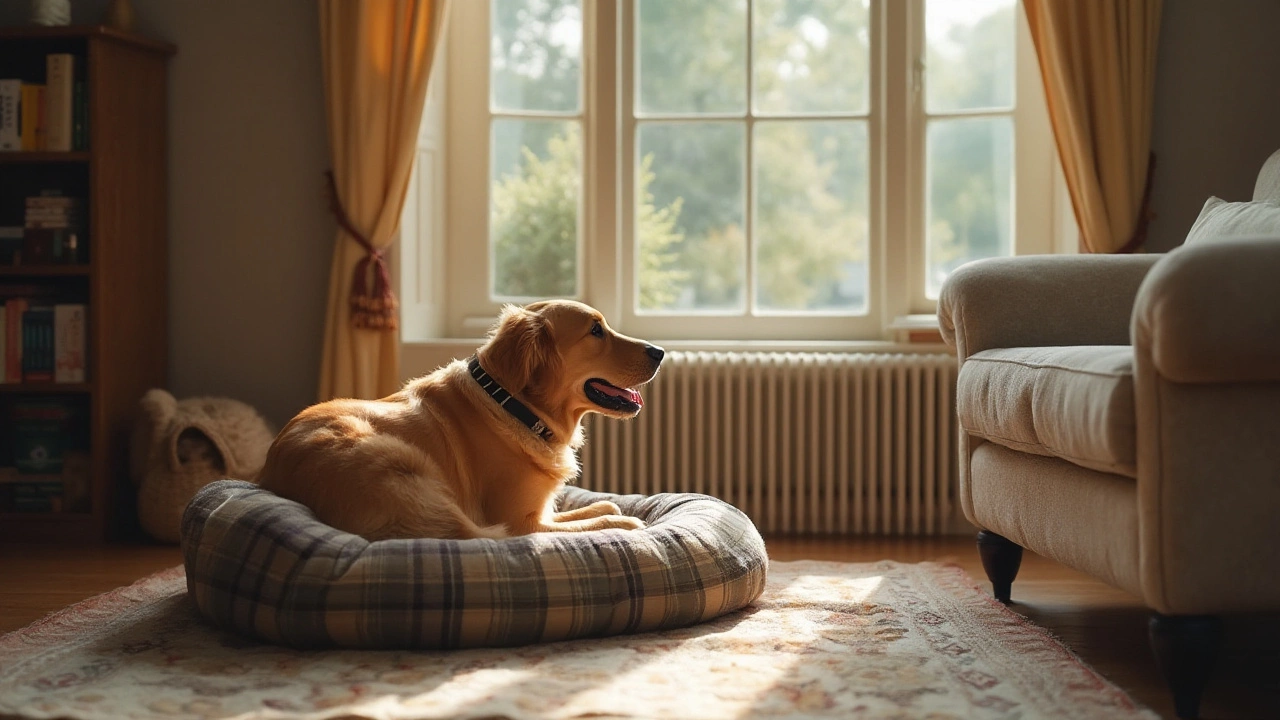Stress Relief for Dogs and Their People
Feeling tense? Your dog probably picks up on it too. A nervous pup can bark, chew, or act out, making the whole household feel on edge. The good news is that a few simple changes can calm both your pet and you, without spending a fortune on fancy gadgets.
Everyday Routines That Keep Stress Low
Consistent walks are a lifesaver. A brisk 20‑minute stroll burns extra energy and gives your dog a chance to sniff, which is basically a natural stress‑relief session. Pair the walk with a short play break – toss a ball or use a tug toy – and you’ve got a double dose of calm.
Feeding at the same time each day also helps. Dogs thrive on predictability, so setting a regular meal schedule tells their brain that life is under control. If you’re worried about over‑excitement, try a puzzle feeder. The mental challenge keeps the mind busy and reduces anxiety.
Calming Tools and Simple Hacks
Sometimes the environment needs a tweak. A quiet corner with a comfy blanket (just make sure it’s safe for the crate) gives a nervous pup a safe retreat. If you wonder whether to cover the crate at night, the short answer is: go for it – a cover can mimic a den and lower stress.
Collars and harnesses can also affect mood. A tight, uncomfortable collar may cause irritation, leading to barking or pulling. Switching to a well‑fitted harness, especially on hikes, lets your dog move without pressure on the neck.
For extra calm, try a pheromone diffuser or a calming chew. Many owners see a noticeable drop in jittery behavior within a few days. Combine this with a regular grooming routine – a gentle brush can be soothing, and many dogs enjoy the tactile contact.
If your dog barks nonstop, the cause is often stress. Our guide on How to Stop Dogs from Barking offers practical steps: identify triggers, use a ‘quiet’ cue, and reward silence. Consistency is key; you’ll hear fewer yaps and enjoy a quieter home.
Another hidden stress sign is nooking – when dogs suck or knead soft toys. While it’s sweet, excessive nooking can mean your pup is seeking comfort. Offering a proper chew toy, as discussed in the Nooking in Dogs article, redirects the habit and eases tension.
Travel can spike anxiety too. Whether you’re flying with a pet or taking a road trip, preparation matters. Our Flying with Pets guide walks you through TSA tips and pre‑flight routines that keep both you and your dog relaxed.
Finally, remember that you set the emotional tone. If you’re stressed about a grocery run, your dog can sense it. Take a deep breath, use a calm voice, and keep the walk short and positive. Over time, your dog learns that calm equals safety.
Stress relief isn’t a one‑size‑fits‑all solution, but with routine walks, a predictable feeding schedule, a safe space, and the right gear, you’ll notice a calmer pup – and a calmer you.
- Morgan Ainsworth
- 0 Comments
Exploring the Efficacy of Calming Collars for Dogs
Calming collars for dogs are marketed as a solution for reducing anxiety and stress in canines. Pet owners often seek these collars with hopes of easing behaviors like excessive barking or restlessness. But do they genuinely work, or are they just another gimmick? This article delves into the science behind calming collars, reviews their benefits and limitations, and offers helpful tips for addressing dog anxiety.
View More
